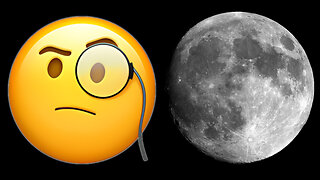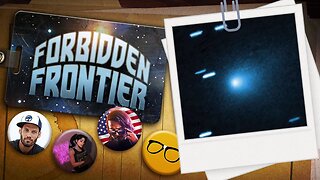Premium Only Content

Acids and Bases: Brønsted–Lowry, Arrhenius, and Lewis Models
In this video I provide an overview of acids and bases, their 3 different theories, and provide a pH chart of household items. The 3 different models or theories of acids and bases are all either a superset or subset of each other. The Lewis model is the most general and states that an acid accepts an electron pair (via a covalent bond) while a base donates an electron pair. The Brønsted–Lowry model is a subset of the Lewis model and states that an acid gives protons while a base takes protons. The Arrhenius model is a subset of the Brønsted–Lowry and states that in aqueous solutions (where water is the solvent) acids give the hydronium ion (H3O+) while bases give the hydroxide ion (OH-).
The acidity or basicity of aqueous solutions is measured on a pH scale (short for "power or potential of hydrogen") and is an inverse logarithmic chart. The higher the concentration of hydronium ions, the lower the pH and hence more acidic the solution. The lower the concentration of hydronium ions, the higher the pH and hence more basic the solution is. Note that the pH scale is logarithmic, thus and increase or decrease of 1 pH means a 10 times increase or decrease in the concentration of hydronium ions. Pure water is considered neutral and has a pH of 7. Lemon juice is acid and has about a 2 pH, whereas household bleach is very basic with a pH close to 13.
I also briefly cover surfactants, which are substances that lower the surface tension between liquids; hence are typically used as soaps or detergents.
Time stamps:
- Acids donate protons or form covalent bond with electron pairs: 0:00
- 3 definitions for Bases: 1:43
- Acid Base Reaction theories as superset and subset models: 2:31
- H+ is short for the hydronium ion: 3:06
- Acids become more negative, bases become more positive: 4:29
- Arrhenius theory by Svante Arrhenius in 1984: 4:35
- Bronsted-Lowry theory by Johannes Nicolaus Bronsted and Thomas Martin Lowry proposed in 1923 and formalized in 1938: 5:44
- Lewis theory by Gilbert N. Lewis in 1923: 6:35
- Bronsted-Lowry acid-base and conjugates equilibrium expression: 6:59
- Chemical reaction and equilibrium: 10:10
- pH or Potential of hydrogen: 10:57
- pH logarithmic chart of household items: 13:09
- Surfactants lower surface tension between two liquids: 14:54
- Periodic table of elements: 16:38
- Acid strength: Strong vs Weak acid: 17:48
Full video below:
- #MESScience 3: Overview of Biology: https://youtu.be/WX_qzT0nZFY
- HIVE video notes: https://peakd.com/hive-128780/@mes/messcience-3-overview-of-biology
- Video sections playlist: https://www.youtube.com/playlist?list=PLai3U8-WIK0FYO6bxFbBAtVJ9sDOJnH72
- #MESScience playlist: https://www.youtube.com/playlist?list=PLai3U8-WIK0FjJpwnxwdrOR7L8Ul8VZoZ .
------------------------------------------------------
Become a MES Super Fan! https://www.youtube.com/channel/UCUUBq1GPBvvGNz7dpgO14Ow/join
DONATE! ʕ •ᴥ•ʔ https://mes.fm/donate
SUBSCRIBE via EMAIL: https://mes.fm/subscribe
MES Links: https://mes.fm/links
MES Truth: https://mes.fm/truth
Official Website: https://MES.fm
Hive: https://peakd.com/@mes
Email me: contact@mes.fm
Free Calculators: https://mes.fm/calculators
BMI Calculator: https://bmicalculator.mes.fm
Grade Calculator: https://gradecalculator.mes.fm
Mortgage Calculator: https://mortgagecalculator.mes.fm
Percentage Calculator: https://percentagecalculator.mes.fm
Free Online Tools: https://mes.fm/tools
iPhone and Android Apps: https://mes.fm/mobile-apps
-
 3:20:46
3:20:46
Math Easy Solutions
1 day agoMES Livestream 104: Evidence for Moon Landing
329 -
 LIVE
LIVE
Nerdrotic
2 hours ago $0.07 earnedMysteries of 3I/ATLAS | Forbidden Frontier #113
549 watching -
 11:52
11:52
Exploring With Nug
1 hour ago $0.03 earnedWhat’s Hiding Under This Dallas Lake We Found a Vehicle!
7.07K3 -
 2:59:09
2:59:09
Barry Cunningham
8 hours agoBREAKING NEWS: PRESIDENT TRUMP SET TO TAKEOVER CHICAGO AND BOSTON!
26.1K25 -

LumpyPotatoX2
3 hours agoSunday Funday on HellDivers - #RumbleGaming
9.56K -
 3:11:52
3:11:52
Esports Awards
5 hours agoEsports Awards: Decade Awards 2025
47.8K3 -
 1:02:58
1:02:58
Sarah Westall
3 hours agoMILITARY WHISTLEBLOWER: How Social Media Military Level Psyops are Manipulating You w/ Patrick Bergy
15.3K6 -
 30:41
30:41
Stephen Gardner
3 hours ago🔥WHITE HOUSE GETS UNEXPECTED BIG WIN!
18.4K17 -
 9:39
9:39
MattMorseTV
5 hours ago $0.55 earnedVance just DROPPED a BOMBSHELL.
15.3K53 -
 2:40:14
2:40:14
DooM49
5 hours agoThe Grind for Battlefield 6 Skins - A-10 Unlocked
3.04K